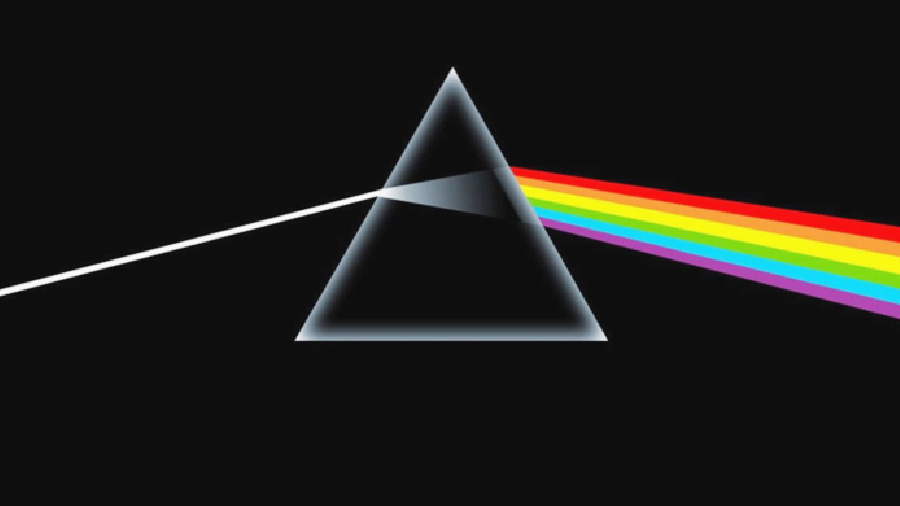
Both David Gilmour and Roger Waters took The Dark Side of the Moon on solo tours later
It was just them noodling around with their usual sound. A casual jam. An evening meeting at Nick Mason’s place. And all the unimpressive birth stories that talk about the hours when the weird bunch started cooking an album, that was certainly going to be all the things the existing air did not know. An album that would not capture the imagination but doctor it and fiddle without any restrictions. And they knew they were on to something. But they did not quite know what it was.
Fifty years down the line, PinkFloyd’s The Dark Side of the Moon sits as the album that peaked the album era, which blurred the lines between progressive rock and classical rock and one that catapulted the band to indescribable glory. As one of the highest-selling albums of all time, and one that sat on charts through decades, bringing myriad sounds to the popular understanding of rock music, The Dark Side of The Moon was Floyd’s gift to music, a testament to the wings of imagination, experimentation, camaraderie (yes, they did bond well at some point)and its complex tryst with the dark corners of the mind.
THE DARK SIDE
Listening to the album for the first time is always a confusing experience. You never really know what is happening. The music runs in circles, songs end abruptly, screams, sounds of heartbeats and money registers pollinate the soundscape. And once you hear it, there is no going back. It plants itself and intrigues with every passing note — every note holding strong significance, distinct and unsubtle. The album, as the band conceived, is a concept album dealing with psychological issues that panged the band members peering into immortal stardom —conflict, greed, the fleeting passage of time and also the deteriorating mental state of their former bandmate, Syd Barrett.
With lyrics written by Roger Waters, and David Gilmour and Richard Wright weaving together the sonic landscape, the album made them embrace their unfettered desire to venture into the unknown on a popular note, talking about complex issues on an accessible plain. As Steven Wilson notes:“The space in that record is what makes it so beautiful, the glow that comes, this kind of halo of warmth that comes off the record. The melodies, the simplicity, that the pop sensibility, I’m sure we’ll talk about that with some of these other records I’m going to pick. There is a very strong pop sensibility on The Dark Side of the Moon which makes it appeal to almost anyone.”
THE MUSICAL HORIZON
With the album, Floyd erased numerous invisible lines and extended the scope of a concept album to incredible ends. Basing the core of the album on pre-recorded material and musique concrete, the tracks embodied Floyd’s inward quest into the psyche, away from the wave of rock bands venturing into the loud and the shunned pastures out there. David Gilmour, Richard Wright and Nick Mason worked with the inimitable Alan Parsons to create the sound with outrageous experimentation.
Each side of the album is a continuous piece of music, with five tracks, incepting with a strange prelude of heartbeats, the sound of the money register, helicopter, and screams on Speak To Me and fading with the sound of the evocative vocalising on The Great Gig in The sky on the first side. The first side also features the iconic tracks, Breathe, On The Run and Time which string together a wonderfully delicate passage with the first two tracks talking about the issues that latch on to our daily lives, with empathy and care steering us with the mood swiftly, morphing into a sense of threat, crunch, fleeting time and floaty metaphor for death with the last three tracks on the first side.
The second side begins with funky and groovy saxophone-laden Money pouring in with its rich experimental sound of cash registers, tearing paper and clinking coins. The final four tracks on the album condense the dichotomous nature of human relationships fusing into the fragile psychological themes of alienation anxiety, fear and gradual descent into lunacy as brought out in the tracks Us and Them, Any Colour You Like, and Brain Damage, bringing the album to a close.
LEGACY
The album remains a gospel for musicians across the world, making numerous take up music as a profession, sparking the desire to produce their first album and try experimenting with sound, in a room— ‘the inimitable joy of playing in aband’ as Roger Water puts it. Acting as an influential pivot to bands like Radiohead and Porcupine Tree, the album brought laid out a sonic ground for posterity. Steven Wilson continues: “It sounds beautiful. And was the album — we were talking about how technology sometimes can influence people, or records can influence technology and vice-versa — this was an album in the ‘70s that persuaded a lot of people to invest in high-end stereo equipment.I think it’s an album that never ages because it has a timeless production,it has almost like a golden glow to it. Everything sounds very organic, very natural, nothing about it sounds contrived or of its time.”
The album often arrives as an eye-opening personal experience peppered with a sense of introspection. A record spinning into eternity with a sleeve that could mean a million things and yet something as unified and simple as the mind with all its designs — light refracted off a prism. Designed by Hipgnosis, the sleeve stands as probably the most iconic album cover of all time. As The Dark Side of The Moon completes 50 years, it is always a safe bet to drift back to the days of yore, when Gilmour and Waters could be in the same room, and produce a piece of art that lives, breathes and refract still date.

(L-R) Richard Wright, David Gilmour, Nick Mason and Roger Waters

Pink Floyd in performance, 1973

Floyd in a 1973 advert

The iconic album sleeve designed by Hipgnosis
